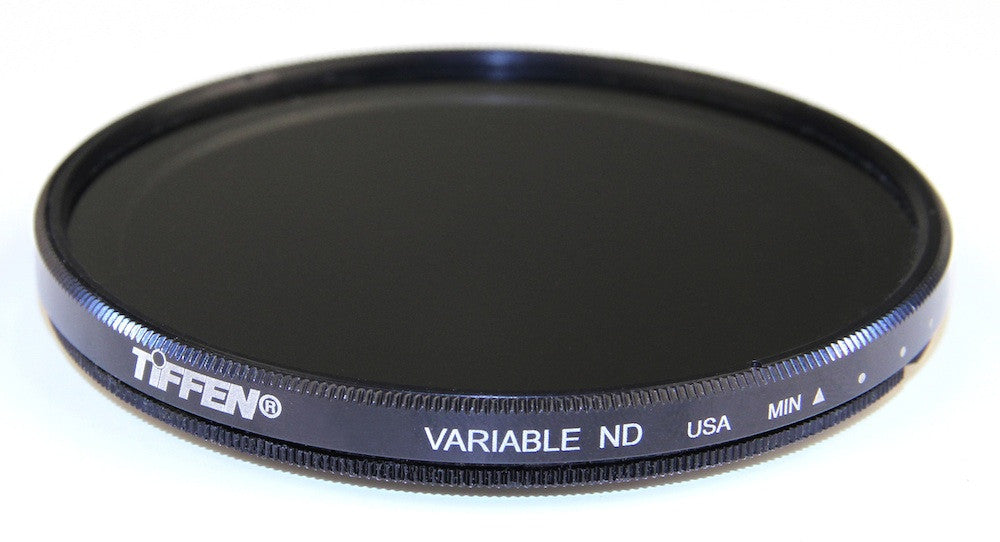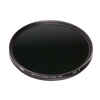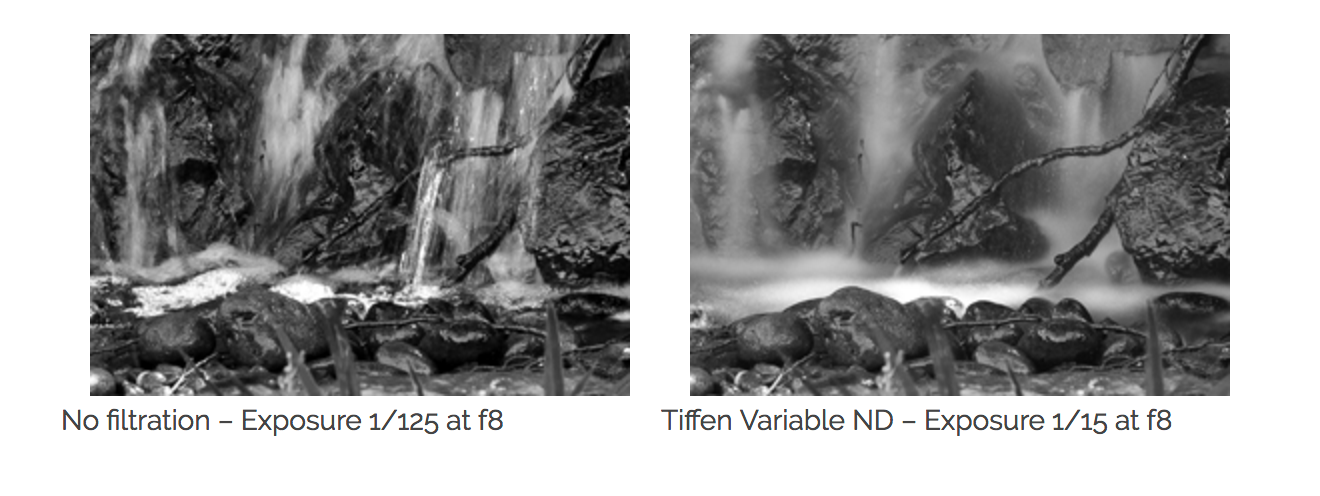
Hoya 72mm Neutral Density NDX8 (3-stop) HMC Filter

Hoya 72mm Neutral Density NDX4 (2-stop) HMC Filter

Hoya 72mm Neutral Density NDX2 (1-stop) HMC Filter

Syrp Super Dark Variable ND Filter Large (82mm)

Description
The Tiffen Variable ND filter is a unique, versatile and flexible tool, affording you the convenience of using several Neutral Density filters all in one. Primarily used as a photographic tool for controlling depth of field and exposure, the Variable ND is being sought in the video market as well because it is fast, easy to use, small, lightweight, and does not require additional accessories such as a matte box. Available in 52, 58, 62, 67, 72, 77 and 82mm.
- Provides 2 to 8 stops of light control
- Thin profile ring - 9mm
- Wider outer optic to help reduce vignetting at wide angles
- Comes in Tiffen Professional packaging with padded black nylon pouch
- Made with high quality optical glass using Tiffen's ColorCore™ technology
- Made in the USA
- 10-year warranty
Why use a Variable ND Filter?
Neutral density filters reduce the amount of light going through the lens into your camera. By reducing the light you are able to achieve the following:
• Allows the use of slow shutter speeds, with high speed films or digital cameras, to record movement/image blur in subjects such as waterfalls, clouds or any fast moving subject
• Gives you full control over your depth of field. You are able to decrease depth of field by using wider apertures, which helps separate subjects from their background (subject matter in focus while your background is blurred)
• Allows you to shoot high speed film (above ISO 400) in bright outdoor situations by reducing effective ISO
• Enables cine and video cameras (which have fixed shutter speeds) to film subjects such as snow, sand or other bright scenes which could cause overexposure
Before and After Effects

The Tiffen Variable ND filter operates on the same principle as a Circular Polarizer – rotate until you reach your desired effect and shoot. It allows you to have continuous control over the amount of light coming through your lens in an approximate range of 2 (ND 0.6) to 8 (ND 2.4) stops – while maintaining the integrity of your image.
*Note: The evenly spaced indexing marks between MIN and MAX do not represent calibrated stops. They are for reference only, to be used as a density bench-mark to return to a previous setting.
